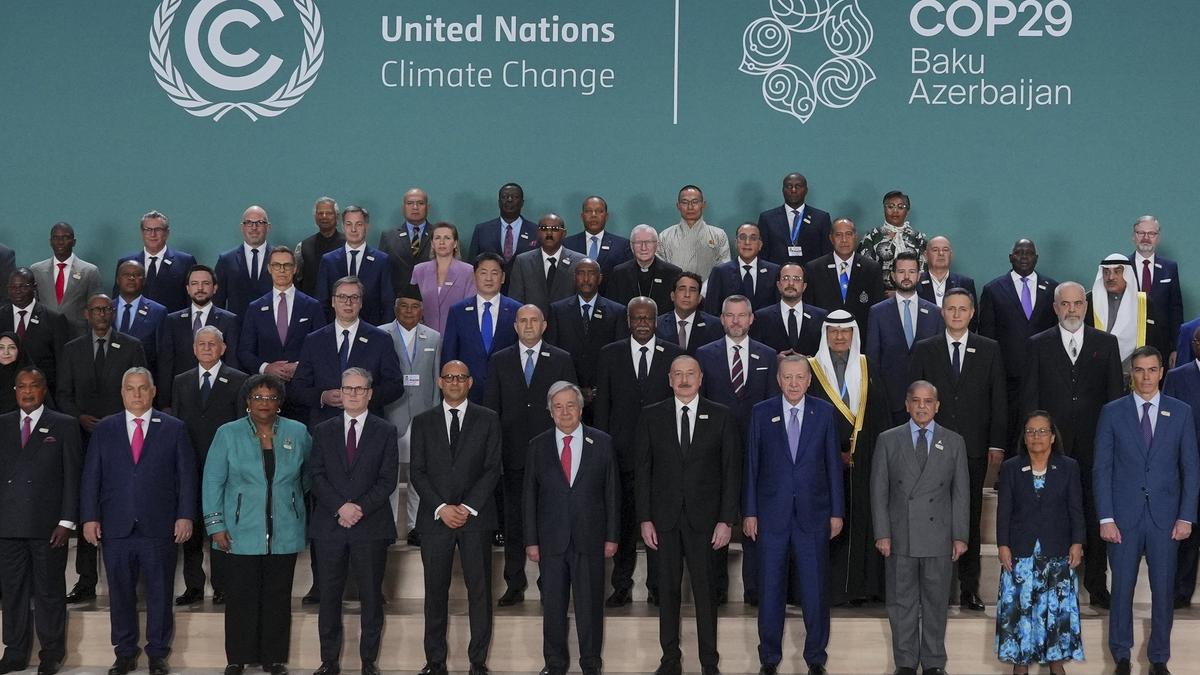Countries assembled in Baku for the annual climate conference, COP29, voted to clear a much-delayed agreement to finalise a global carbon market.
Also Read: COP29 Summit LIVE Day 2
Such a market would allow countries to trade carbon credits – certified reductions of carbon emissions – among themselves and whose prices are determined as a consequence of emission caps imposed by countries.
The market itself follows from a section in the Paris Agreement, called Article 6. Sub sections with the Article spell out how countries can bilaterally trade carbon among themselves (Art 6.2) and participate in a global carbon market (6.4).
Though most of the necessary nuts and bolts to make operational such a carbon market supervised by a United Nations body were in place since 2022, there were several niggles, particularly on ensuring that the carbon credits generated are genuine and its antecedents are transparent.
There have been several rounds of talks involving the Parties (country signatories to the Paris Agreement) on these outstanding concerns that are raised. Last month, a supervisory body of the United Nations, which would be the ultimate arbitrator of the market, set out a draft text that laid out the standards for carbon removal and assessing projects.
A senior official who is part of the Indian delegation told The Hindu days before the COP 29 commenced, that even this version was not “entirely acceptable” but was something that could be ironed out.
Key issue
A key issue surrounding carbon markets is accounting.
Say, a country in a developed country finances an afforestation project in a developing country, and this theoretically prevents 1,000 tonnes of carbon from being released into the atmosphere. Would this saved carbon be part of the developed country’s ledger of saved credits when the actual prevention is happening elsewhere? At what stage of a renewable energy project’s life-cycle will a generated credit be considered eligible for trade? Can countries claim credits generated in their borders, financed by foreign companies, and count them towards their Nationally Determined Contributions (NDC)?
India, as part of its NDC, has committed to reduce emissions intensity by 45% by 2030 from 2005 levels and create a carbon sink of 2.5 to 3 billion tonnes of additional forest and tree cover by 2030.

In the run-up to COP 29, there was general optimism that a global carbon trading mechanism could be a reality and that the first UN-sanctioned carbon credits would be available in 2025.
“This will be a game-changing tool to direct resources to the developing world,” Mukhtar Babayev, COP29 president, said in a statement. “Following years of stalemate, the breakthroughs in Baku have now begun. But there is much more to deliver,” he added.
Finalising Article 6 negotiations could reduce the cost of implementing national climate plans by $250 billion per year by enabling cooperation across borders.
“The decision on Article 6.4 is a major step forward. There is still some time till the rubber hits the road as now the methodologies for implementing have to be finalised but this should be fairly soon. However, this should not take the focus away from the New Collective Quantified Goal (NCQG) as carbon markets are one of the ways to deliver on the NCQG,” Vaibhav Chauturvedi, energy economist and an expert on carbon markets, Council on Energy Environment and Water, Delhi, told The Hindu.
NCQG refers to an update to the $100 billion a year that was to be made available to developing countries by developed countries to adapt to climate change as well as mitigate emissions. The Paris Agreement says that this new target must come into effect by 2025 and is therefore one of the most keenly awaited outcomes of the Baku COP.
U.N. Climate Change Executive Secretary Simon Stiell also emphasised the importance of reaching a new global climate finance goal in Baku.
“If at least two-thirds of the world’s nations cannot afford to cut emissions quickly, then every nation pays a brutal price,” he said. “So, let’s dispense with any idea that climate finance is charity. An ambitious new climate finance goal is entirely in the self-interest of every nation, including the largest and wealthiest.”
Published – November 12, 2024 12:18 pm IST






